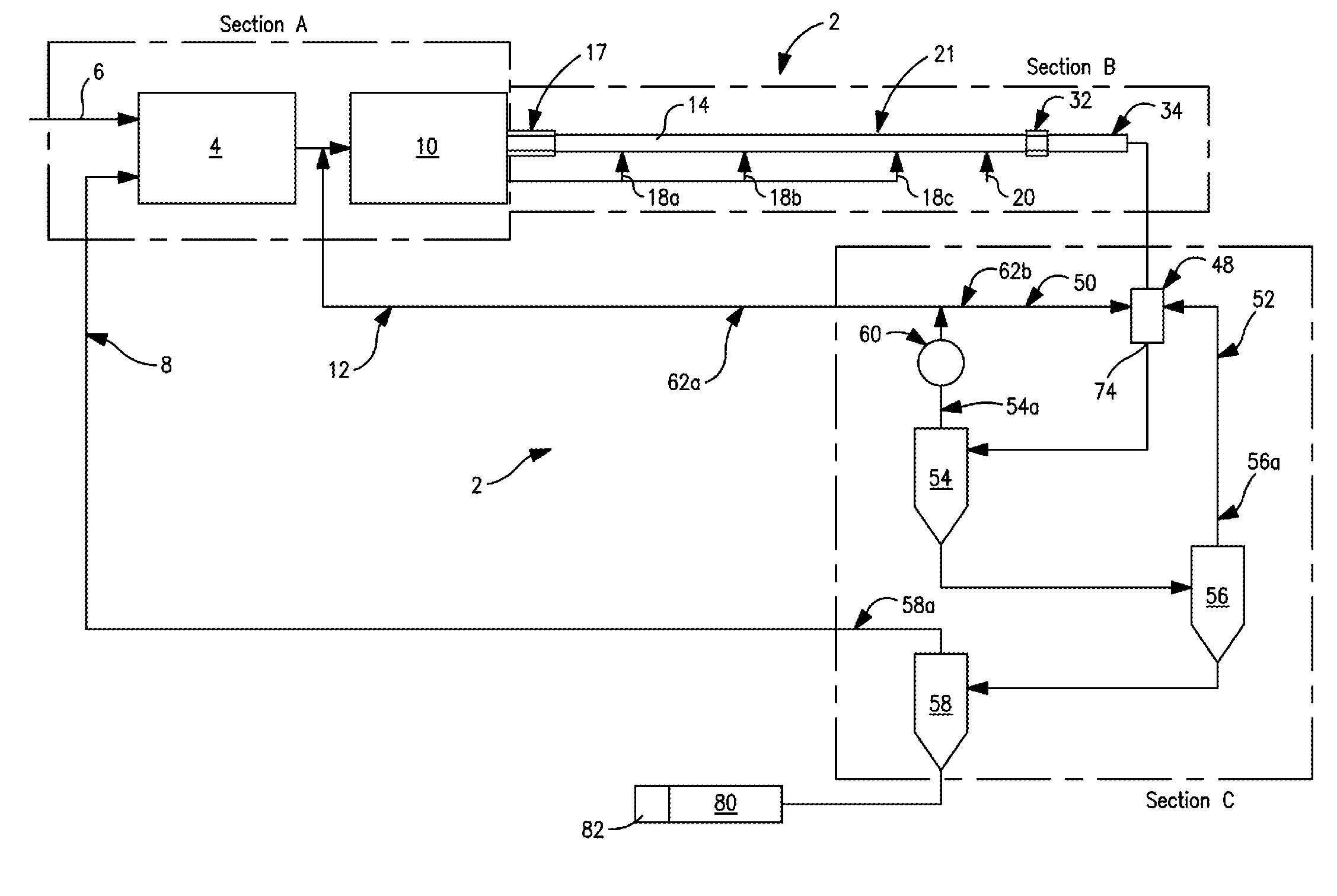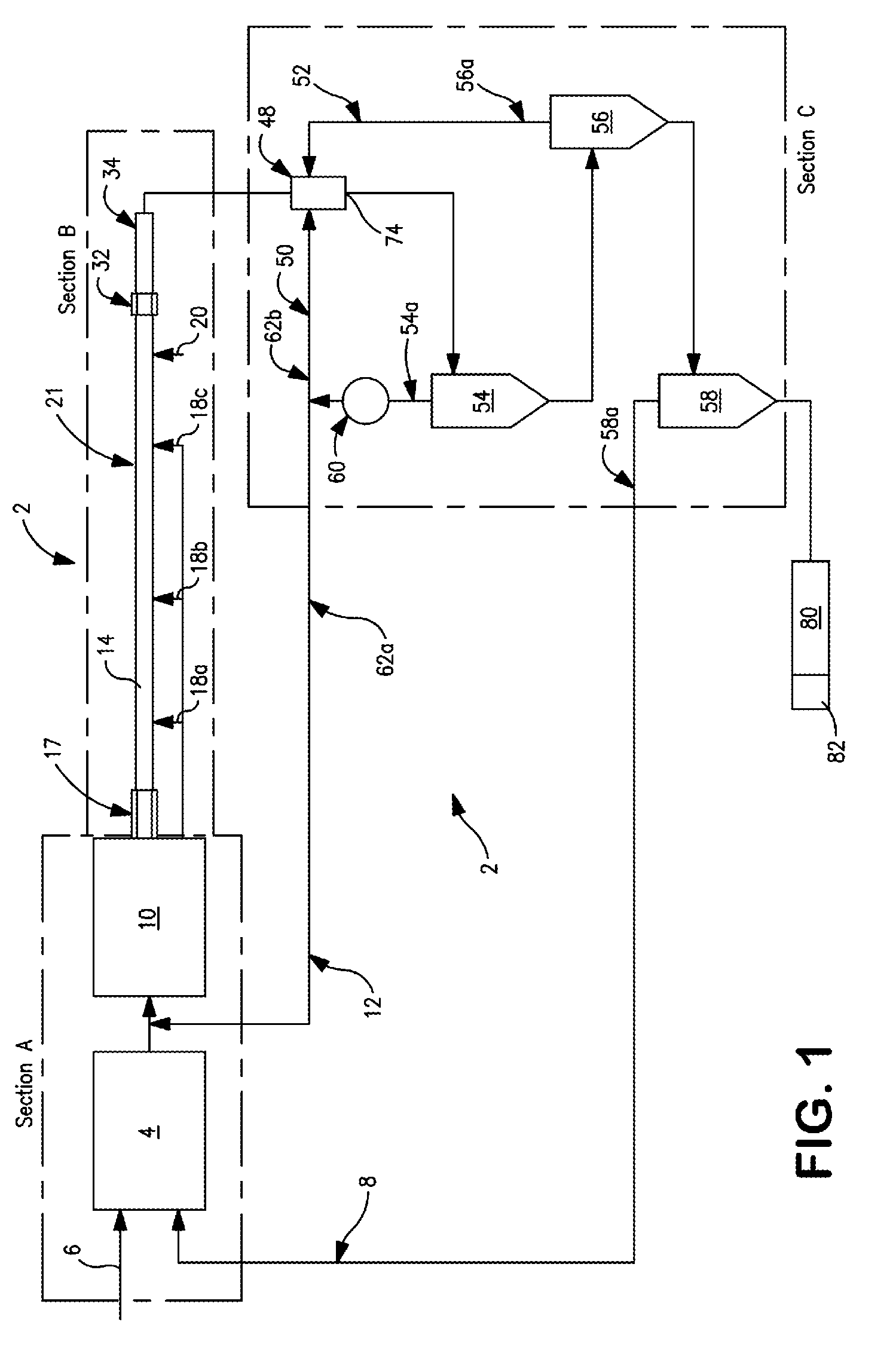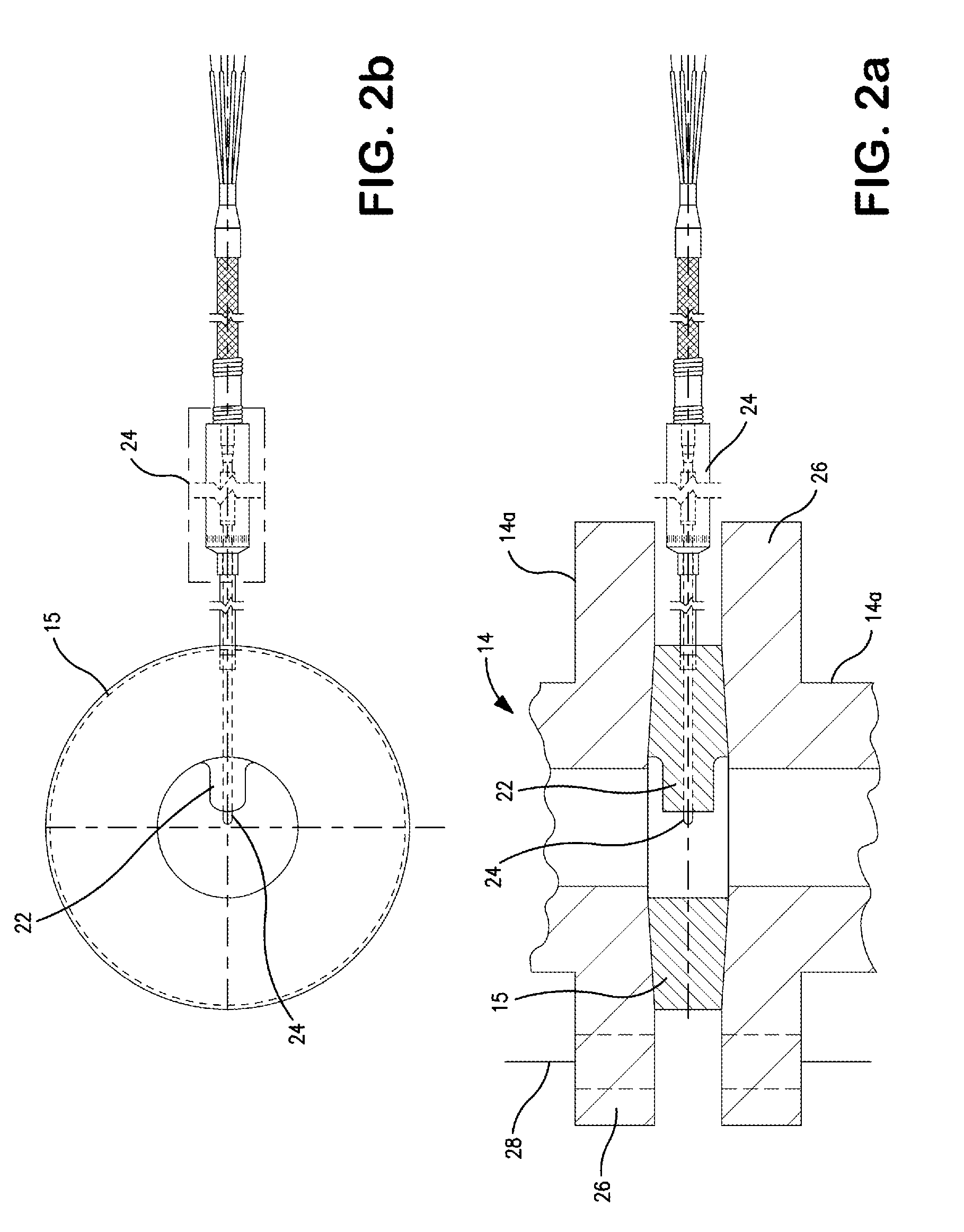High pressure polymerization process
a polymerization process and high pressure technology, applied in chemical/physical/physical-chemical processes, chemical apparatus and processes, chemical/physical/physical-chemical stationary reactors, etc., can solve the problems of polymer deposits affecting the interior walls of the tubes, and achieve the effects of improving plant efficiency, simple and low cost manner, and improving plant efficiency
- Summary
- Abstract
- Description
- Claims
- Application Information
AI Technical Summary
Benefits of technology
Problems solved by technology
Method used
Image
Examples
example
General Set Up and Operation of the Plant
[0083]With reference to FIG. 1, a continuous tubular reactor polymerization plant 2 contains three main sections:[0084]Section A: Compressor equipment and its associated cooling arrangements that raise the pressure of incoming monomer, such as ethylene and optionally one or more comonomers, to the working pressure for polymerization.[0085]Section B: A tubular reactor with its free radical initiator and monomer injection arrangements where the compressed feed is polymerized to the targeted conversion in a single phase condition;[0086]Section C: The separator cascade and associated cooling arrangements that remove the polymer from the reactor effluent and cool and recycle the unreacted components in the effluent back to Section A.
[0087]The invention can be used to increase the plant production capacity. To this end higher conversion is employed. More polymer of suitable quality, of which the most critical are generally the optical properties su...
PUM
| Property | Measurement | Unit |
|---|---|---|
| pressure | aaaaa | aaaaa |
| pressure | aaaaa | aaaaa |
| pressure | aaaaa | aaaaa |
Abstract
Description
Claims
Application Information
 Login to View More
Login to View More - R&D
- Intellectual Property
- Life Sciences
- Materials
- Tech Scout
- Unparalleled Data Quality
- Higher Quality Content
- 60% Fewer Hallucinations
Browse by: Latest US Patents, China's latest patents, Technical Efficacy Thesaurus, Application Domain, Technology Topic, Popular Technical Reports.
© 2025 PatSnap. All rights reserved.Legal|Privacy policy|Modern Slavery Act Transparency Statement|Sitemap|About US| Contact US: help@patsnap.com



